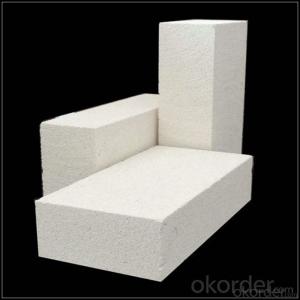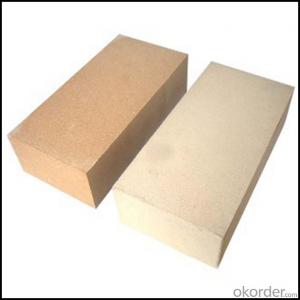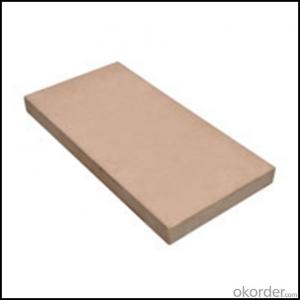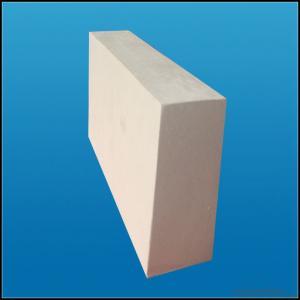Fire Clay Refractory Brick
- Loading Port:
- China main port
- Payment Terms:
- TT OR LC
- Min Order Qty:
- 0.05
- Supply Capability:
- 1800 m.t/month
OKorder Service Pledge
OKorder Financial Service
You Might Also Like
Acid Resistant Brick
CMAX firebricks are classified under temperature between 1300℃ to 1700℃, manufactured from high purity alumina clay.
High alumina refractory brick is dense shaped refractory material. With high refractoriness and mechanical behavior under high temperature, refractory brick is the necessary material of high-temperature services, mainly used for industrial furnaces and kilns and thermal equipment.
High alumina refractory brick has wide applications, mainly used in metallurgy, construction(cement and glass), petroleum, chemical industry, electric power and machine building.
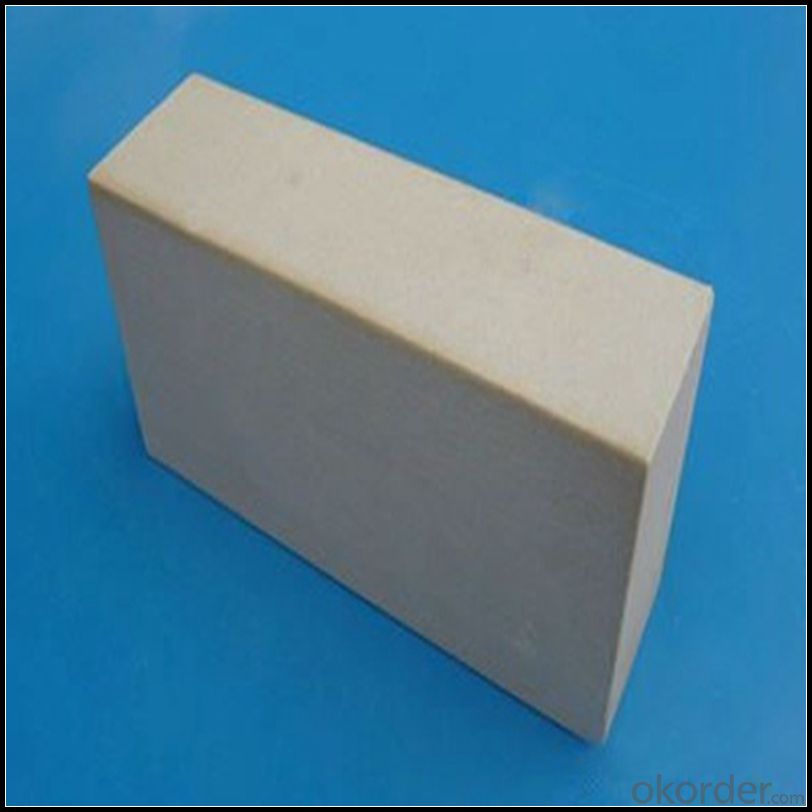
Features
1.High plasticity
2.Good thermal shock performance
3.Hardening quickly
4.Low price
Application
The product is a specialty produced from the sedimentary clay in Guangxi, with fine particle size, viscosity, high plasticity, combined with strength, good dispersing and high refractoriness advantages.
The mineral composition is mainly disordered Kaolinite >65% of, quartz <30%, Montmorillonite <10%,Illite<3%,and a small amount of Titanium minerals such as Iron.
The mineral’s particles are fine, the Kaolin particle size is less than 2μm.The clay has high plasticity, plasticity index typically greater than 25,some up to 45 above.
Data Sheet
Classification Temperature (℉/℃) | 3000/1650 |
Bulk Density (g/cm3 ) | ≤1.0 |
Thermal Conductivity | |
800℃, W/m.K | ≤0.39 |
1000℃, W/m.K | ≤0.43 |
1200℃, W/m.K | ≤0.48 |
Reheating Linear Change (%) | 1550℃×12h |
≤0.9 | |
Chemical Composition (%) | |
Al2O3 | ≥75 |
Fe2O3 | ≤0.5 |
Packaging & Shipping
Packaging Details:Be packed in fumigated wooden pallets
Delivery Detail: 30 days after order

Our Services
Optimum solution and product supply of refractories for high temperature industries, such as iron steel, non-ferrous, petrochemical and building materials.
Engineering design, contract and consult for refractories, and civil architecture design.
Research, development, manufacture and sale of superhard materials.
R&D, manufacture and sale of special packing materials for export.
Inspection, supervision and arbitration of refractories.
Consultation and services in refractories information.
Training and cultivation of high-level talents in refractories profession
Sales Network

Company Information
CNBM (China National Building Material) Group is the largest comprehensive building materials group in China that in integrate scientific research, manufacturing and logistics into one entity. The largest building materials and equipment specialists in China. Upon State Council approval, today CNBM owned more than 300 subordinate manufacturing factories and servicing companies. There are 6 fully owned public listed companies and 11 partially owned with substantial shares public listed companies. In many of these fields, CNBM is playing the leading role in the building industry in the country.
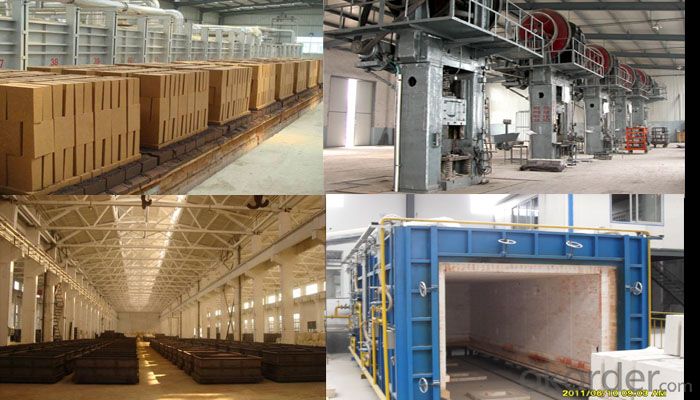
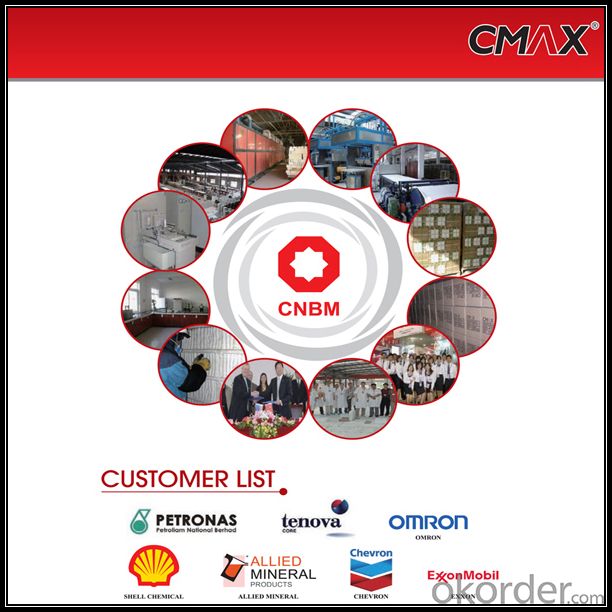
FAQ
1. Which products do you have?
We have all kinds of refractory brick, castable, mortar, cement, ceramic fiber products, etc.
Or you could browse our products to choose what you need.
2. Can you give me a brief introduction of the application of your products?
We are mainly specializing in the refractory materials in iron and steel, cement, glass, ceramics, petrochemical, electric power Industry, etc.
3. If I need your offer, what information do you need?
In order to choose suitable products, it will be appreciated to provide us the information, such us specification, technical data, order quantity, products application etc. If any question, please contact us freely.
- Q:Can insulating fire bricks withstand thermal shock?
- Yes, insulating fire bricks are designed to withstand thermal shock due to their high temperature resistance and low thermal conductivity. They are made to endure rapid changes in temperature without cracking or breaking, making them suitable for various high-temperature applications.
- Q:Do insulating fire bricks require any curing or drying time before use?
- Yes, insulating fire bricks do require curing or drying time before use. This is because the manufacturing process of these bricks involves the use of binders and additives that need to be cured or dried to ensure proper performance and durability. The curing or drying process allows these materials to harden and solidify, enhancing the insulating properties of the bricks. Failure to properly cure or dry the bricks before use may result in reduced insulation efficiency and potential damage to the bricks during the heating process. It is recommended to follow the manufacturer's instructions regarding the specific curing or drying time required for the insulating fire bricks to ensure optimal performance.
- Q:Advantages and disadvantages of wall insulation system?
- The advantages of internal insulation: insulation walls, paint inside the wall, and direct people or other biological contact, in order to ensure human or biological health in insulation coating insulation at the same time, we must first ensure that the paint is non-toxic, no volatile substances.
- Q:Can insulating fire bricks be used in the construction of foundry molds?
- Insulating fire bricks are capable of being utilized in the construction of foundry molds. These bricks are produced using lightweight materials like clay, alumina, and silica, and are specifically designed to possess low thermal conductivity. This quality renders them ideal for various applications that necessitate resistance against high temperatures and insulation, particularly foundry molds. Foundry molds are employed to shape and retain molten metal during the casting procedure. Given that molten metal is generally poured at exceedingly high temperatures, it becomes imperative to employ materials that can endure the heat without melting or distorting. Insulating fire bricks possess a high melting point and exceptional thermal stability, making them appropriate for usage in foundry molds. Furthermore, apart from their resistance to high temperatures, insulating fire bricks also offer commendable insulation properties. This proves to be crucial in foundry molds as it assists in regulating the cooling rate of the molten metal, thereby preventing thermal shock and ensuring proper solidification. The insulation properties of insulating fire bricks also contribute to lowering energy consumption and enhancing the overall efficiency of the foundry process. All in all, insulating fire bricks are an enduring and efficient choice for the construction of foundry molds. They provide resistance against high temperatures, excellent thermal stability, and reliable insulation properties, thus establishing themselves as a dependable option for employment in the demanding conditions of foundry operations.
- Q:How do insulating fire bricks affect the overall durability of a structure?
- Insulating fire bricks play a crucial role in enhancing the overall durability of a structure. These bricks are designed to have a low thermal conductivity, which means they are effective in resisting heat transfer. By reducing the amount of heat that passes through the bricks, they help to maintain a stable temperature within the structure, protecting it from extreme temperature variations. One of the key benefits of insulating fire bricks is their ability to withstand high temperatures. They have a high melting point, which allows them to retain their structural integrity even in the presence of intense heat. This quality is particularly important in structures where high temperatures are generated, such as furnaces or kilns. The ability of insulating fire bricks to handle such extreme temperatures greatly contributes to the durability of the structure. Furthermore, insulating fire bricks offer excellent insulation properties. Their low thermal conductivity prevents heat from escaping or entering the structure, leading to energy efficiency. This not only reduces energy consumption but also protects the structure from potential damage caused by excessive heat loss. By maintaining a consistent temperature, insulating fire bricks prevent thermal expansion and contraction, which can lead to cracks and structural instability. In addition to their heat resistance and insulation properties, insulating fire bricks are also known for their resistance to chemical corrosion. Many structures are exposed to harsh environments or chemicals that can cause degradation. However, insulating fire bricks are made from materials that are resistant to chemical reactions, ensuring their durability and longevity. Overall, the use of insulating fire bricks significantly enhances the durability of a structure. Their ability to withstand high temperatures, provide insulation, and resist chemical corrosion make them a valuable component in various industrial and residential applications. By ensuring a stable and protected environment, insulating fire bricks contribute to the long-lasting and reliable performance of the structure.
- Q:How do insulating fire bricks affect heating or cooling times?
- Insulating fire bricks have a significant impact on heating or cooling times due to their unique thermal properties. These bricks are designed to have low thermal conductivity, meaning they are excellent at reducing heat transfer through conduction. When used in heating applications, insulating fire bricks help to retain heat for longer periods of time. They act as a barrier, preventing heat from easily escaping the system and ensuring that it is directed towards the desired area. This results in a more efficient heating process as the heat is effectively contained within the system and does not dissipate rapidly. Consequently, heating times are reduced as the insulating fire bricks help to maintain a consistent temperature and prevent heat loss. Similarly, in cooling applications, insulating fire bricks can help to slow down the rate of heat transfer. By minimizing the influx of external heat into the cooling system, these bricks aid in maintaining lower temperatures for an extended period. This is particularly useful in situations where a steady and controlled cooling process is required. Overall, the use of insulating fire bricks can significantly affect heating or cooling times by improving energy efficiency. These bricks act as a thermal barrier, minimizing heat transfer and maximizing the effectiveness of heating or cooling systems.
- Q:Can insulating fire bricks be used in blast furnaces?
- Yes, insulating fire bricks can be used in blast furnaces. Insulating fire bricks are designed to withstand high temperatures and provide excellent thermal insulation. Blast furnaces operate at extremely high temperatures, typically around 1500°C (2732°F), and require materials that can withstand these harsh conditions. Insulating fire bricks are made from lightweight materials such as ceramic fibers, which have low thermal conductivity and can effectively retain heat. This makes them ideal for lining the walls and roofs of blast furnaces, as they help to conserve energy, reduce heat loss, and improve overall furnace efficiency. Additionally, insulating fire bricks can also help to protect the structural integrity of the blast furnace by reducing thermal stress and preventing excessive heat transfer to the surrounding environment. Overall, the use of insulating fire bricks in blast furnaces can contribute to improved performance, energy savings, and extended furnace life.
- Q:Are insulating fire bricks easy to handle and install?
- Insulating fire bricks are generally easy to handle and install. They are lightweight, making them easy to transport and carry around. Additionally, their shape and size are designed to be user-friendly, allowing for easy manipulation and installation. Most insulating fire bricks come with pre-drilled holes or grooves, which further simplifies the installation process. Moreover, these bricks can be easily cut or shaped to fit specific dimensions or requirements, making them highly versatile. Overall, insulating fire bricks are considered easy to handle and install, even for individuals with limited experience or knowledge in masonry work.
- Q:Are insulating fire bricks lightweight or heavy?
- Insulating fire bricks possess a lightweight quality, a result of their deliberate design to exhibit high insulation and low density. Their composition primarily consists of lightweight materials like expanded clay, perlite, and vermiculite, which further enhance their weightlessness. Consequently, these bricks prove to be more manageable and easier to install when compared to conventional heavy fire bricks. Nonetheless, insulating fire bricks manage to maintain exceptional thermal insulation capabilities, rendering them well-suited for a range of applications, such as kilns, furnaces, and fireplaces.
- Q:Are insulating fire bricks suitable for use in aluminum smelting furnaces?
- Insulating fire bricks are typically unsuitable for aluminum smelting furnaces as they are designed to retain heat rather than withstand extreme temperatures. Aluminum smelting requires temperatures exceeding 1,000 degrees Celsius, making refractory fire bricks or refractory castables more appropriate. These materials have high melting points and can endure the intense heat without compromising their structural integrity. They also possess excellent thermal shock resistance, which is crucial due to rapid temperature fluctuations in the furnace during operation. Furthermore, refractory materials used in aluminum smelting furnaces should exhibit resistance to corrosion and chemical attack from molten aluminum and other substances involved in the smelting process. Insulating fire bricks may lack the necessary chemical resilience, potentially resulting in premature degradation and failure of the furnace lining. In conclusion, although insulating fire bricks may be suitable for applications requiring thermal insulation, they are generally not recommended for use in aluminum smelting furnaces. Refractory fire bricks or refractory castables are better suited for this chemically aggressive and high-temperature environment.
1. Manufacturer Overview |
|
|---|---|
| Location | |
| Year Established | |
| Annual Output Value | |
| Main Markets | |
| Company Certifications | |
2. Manufacturer Certificates |
|
|---|---|
| a) Certification Name | |
| Range | |
| Reference | |
| Validity Period | |
3. Manufacturer Capability |
|
|---|---|
| a)Trade Capacity | |
| Nearest Port | |
| Export Percentage | |
| No.of Employees in Trade Department | |
| Language Spoken: | |
| b)Factory Information | |
| Factory Size: | |
| No. of Production Lines | |
| Contract Manufacturing | |
| Product Price Range | |
Send your message to us
Fire Clay Refractory Brick
- Loading Port:
- China main port
- Payment Terms:
- TT OR LC
- Min Order Qty:
- 0.05
- Supply Capability:
- 1800 m.t/month
OKorder Service Pledge
OKorder Financial Service
Similar products
New products
Hot products
Hot Searches
Related keywords
